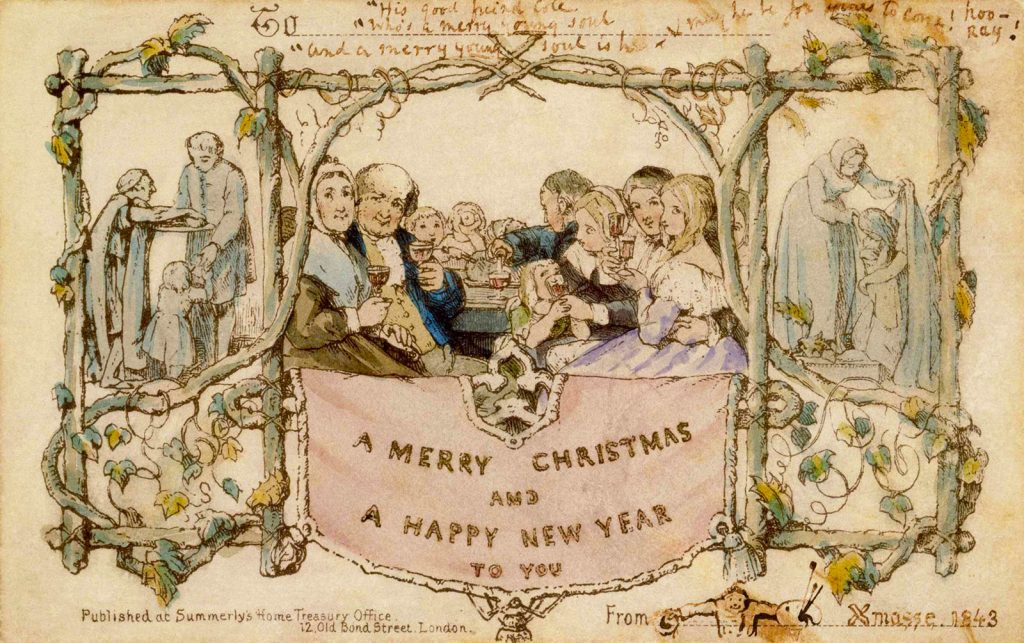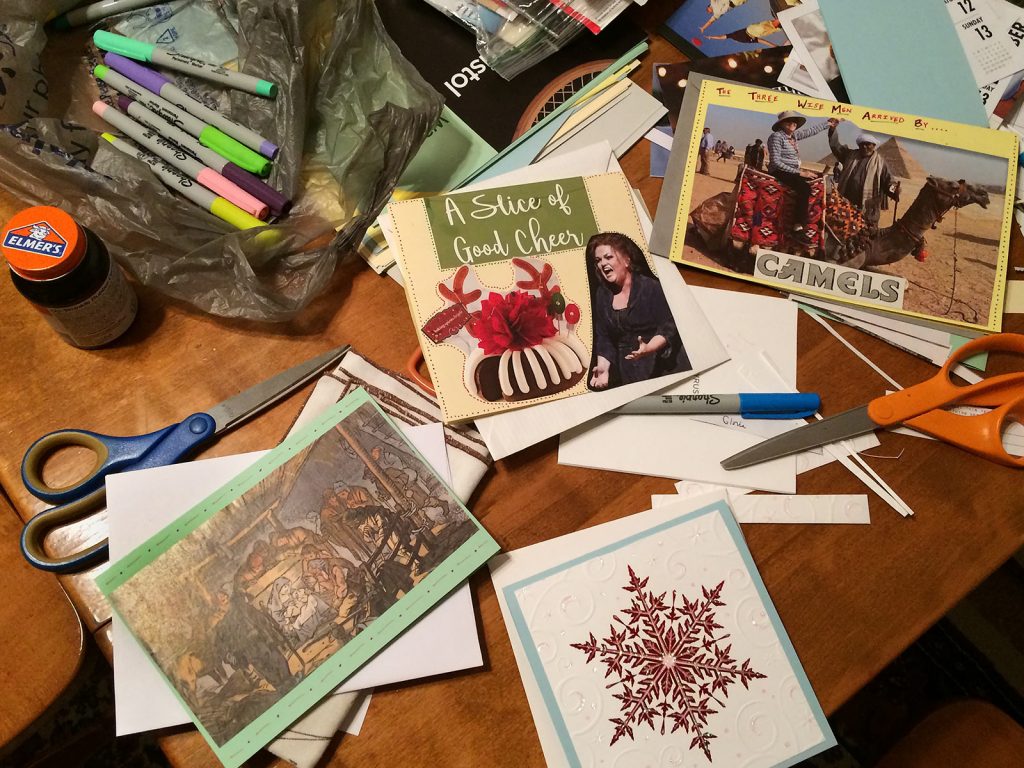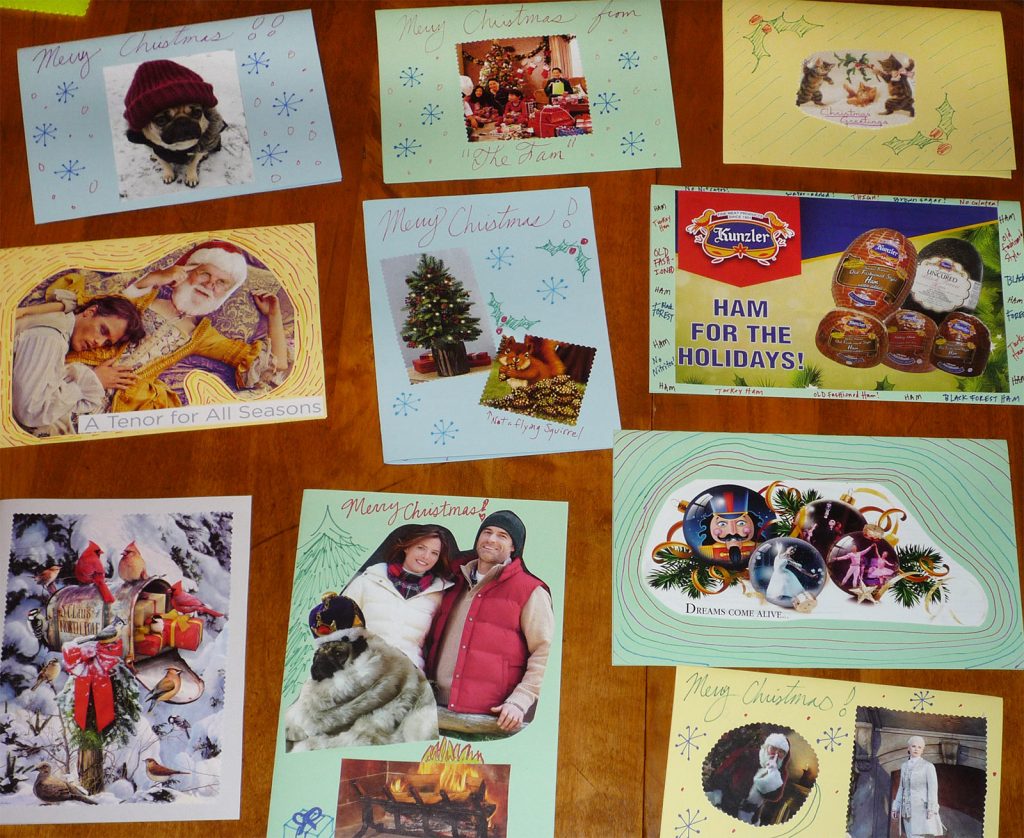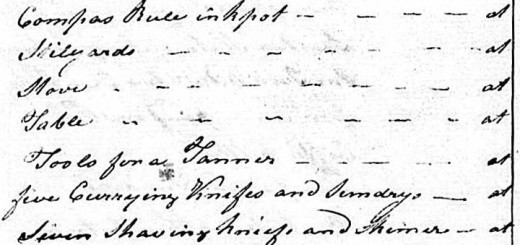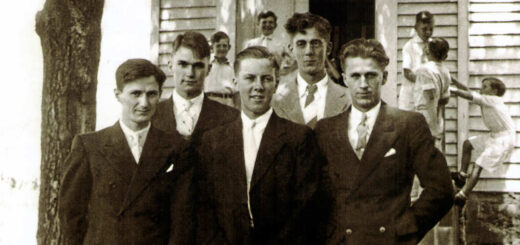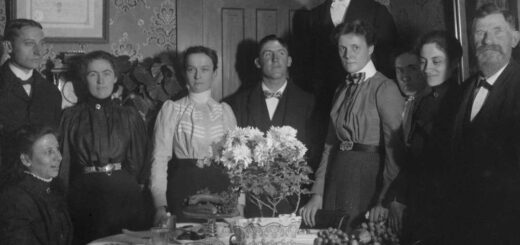Handmade Christmas Cards
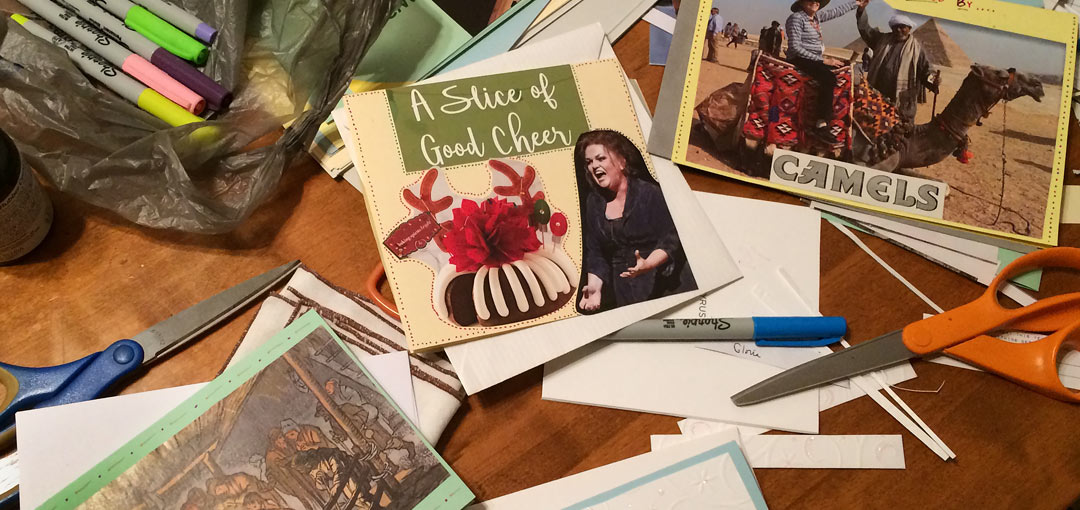
For the last decade, my wife Sara and I have made it part of our holiday traditions to handmake some of our own Christmas cards. The first year or two, I found the process time-consuming and tedious. After all, it’s quite convenient to go to the store and buy a box of cards. However, there is something wonderful and old-fashioned about designing a card with a personalized message.
Research shows that the first Christmas cards appeared during the 17th century in England. These were typically one-of-a-kind items or produced in small batches. Initially, cardmakers preferred designs with flowers, faeries, and imagery that suggested the forthcoming spring. Winter scenes and religious imagery wouldn’t become the standard until the 19th century, which also brought about the mass production of Christmas cards and the popularization of their sending.
The first modern Christmas card is widely recognized as having been sent in 1843 by the Englishman Sir Henry Cole. As the story goes, Cole had grown frustrated with his inability to respond to the many letters he received from friends, family, and acquaintances during the season. What was the solution to this problem? Cole commissioned a friend to design a holiday-themed illustration. This was printed onto a card that could be hand-colored, personalized, and mailed.
Today, as we know, the tradition of sending Christmas cards continues. Most cards are bought in boxes of ten or more, individually signed or personalized, and then sent. One notable exception stems from the growth of consumer photography in the late 20th century. Thanks to the widespread use of digital cameras, many people now create custom-made cards printed with images of themselves, their families, and their pets.
And yet, there are still people who chose to create handmade cards. Some are scrapbooking enthusiasts that enjoy working with colored paper, scissors, and glue. Others do so to save a few dollars or to shun the consumerist culture of Christmas. Finally, there are some, like Sara and I, who think of each card as a gift—a little piece of art that we create for our loved ones.
Realizing that most of you reading this site are my family and friends, I have to apologize in advance. We simply cannot create a card for everyone. Otherwise, we’d have to begin our Christmas preparations in June! Therefore, we tend to give handmade cards to those we will see in person during the holidays.
Handmade cards can be made from most anything. Victorians were fond of paper lace, colored papers, ribbons, and hand-colored prints. In our household, Sara and I collect cardmaking materials throughout the year. These frequently come from magazines, junk mailers, and bits of other cards we have received. With scissors in hand, we clip out snippets of text, photographs, and other decorative elements. Each is safely tucked away, so it can be used in December to create holiday-themed designs.
Just after Thanksgiving, we prepare to assemble our Christmas cards. We begin by pulling out an old liquor box (found by a dumpster in Oakland, CA years ago) which is now filled with our cardmaking supplies. We write down the names of those we will be making cards for and pile card materials by each name. The individual steps in the process happen on different nights. It is far too much work to create 30 or more cards in a single evening! (This was attempted one year and shall never be tried again.)
Next, the cards are assembled. A thick piece of paper, usually colored, forms the foundation of the card. The paper is cut to size, then images and text are affixed to it with glue. Hand-drawn, holiday designs are sketched onto the card, and a personalized note added. Every card is created with the recipient in mind and takes around 20 minutes to finish. Some have classic designs, while others are funny or just plain weird.
Finally, after reviewing each other’s handiwork, Sara and I sign all the cards. Most years, the cards are laid out on a table and photographed. We do this so, as time goes on, we can look back and remember some of our favorite designs from years past.
Making cards by hand can be a lot of work. Yet, instead of viewing this process as drudgery, we look forward to it as an important family tradition—one where we listen to seasonal music, admire each other’s creative designs, and reminisce about Christmases long past.
As you make your way through the holiday season, take a moment and consider the traditions that are important to you and your family. Perhaps these include decorating a tree, making cookies, and wrapping gifts. If sending Christmas cards is on your to-do list, don’t forget their unique origins and, if you have the time, you might try your hand at making a few.

